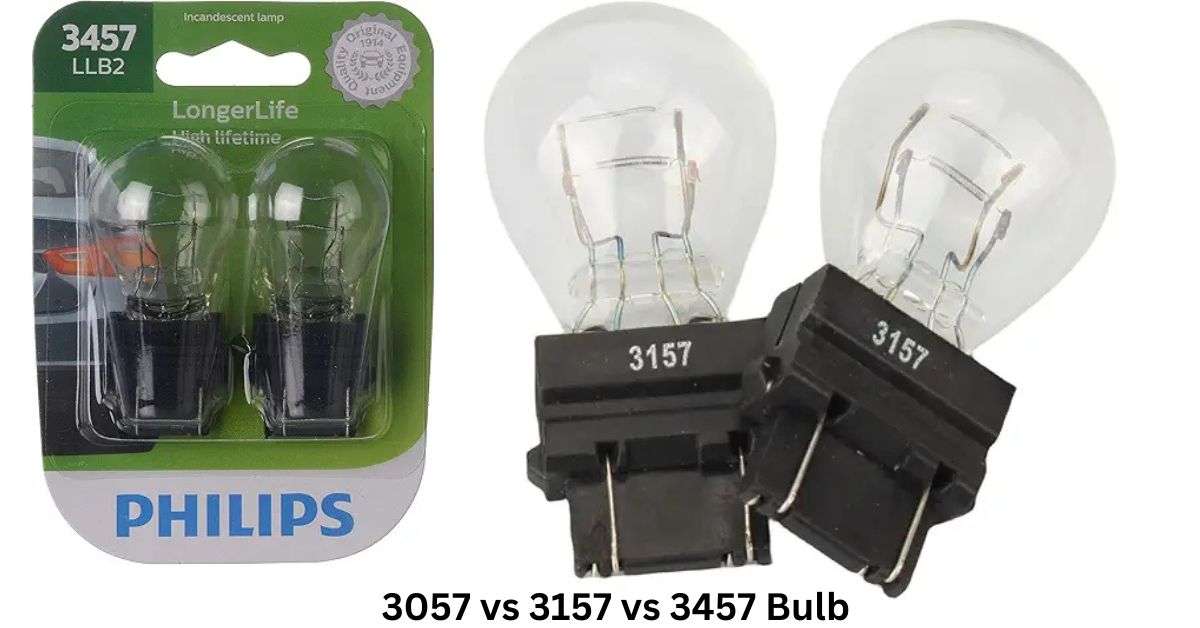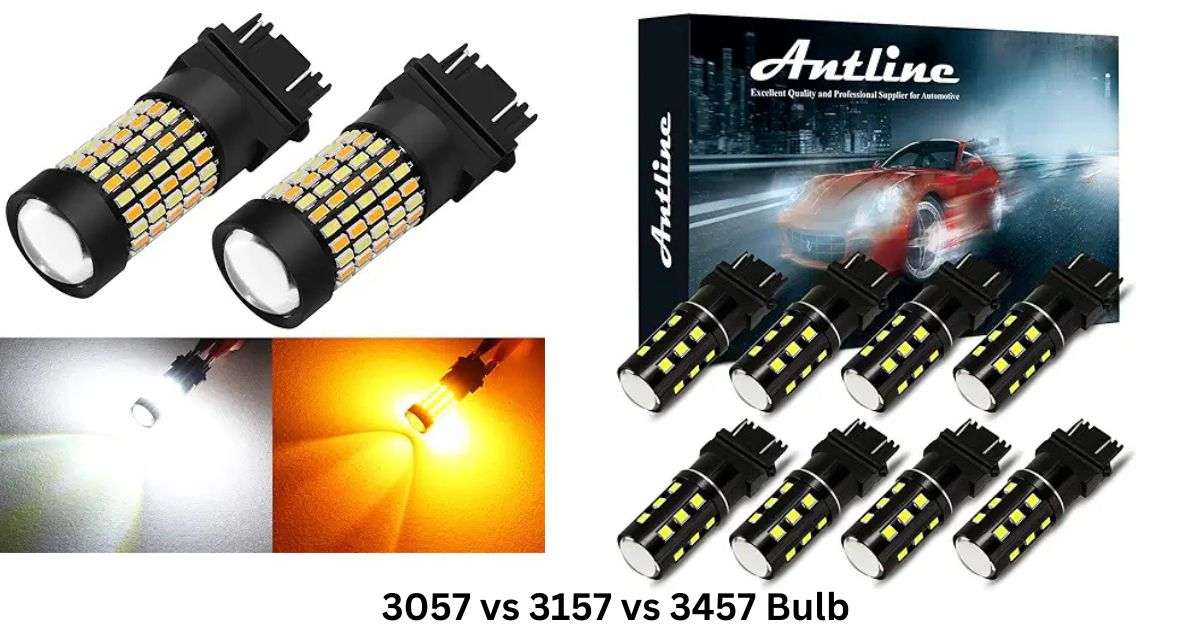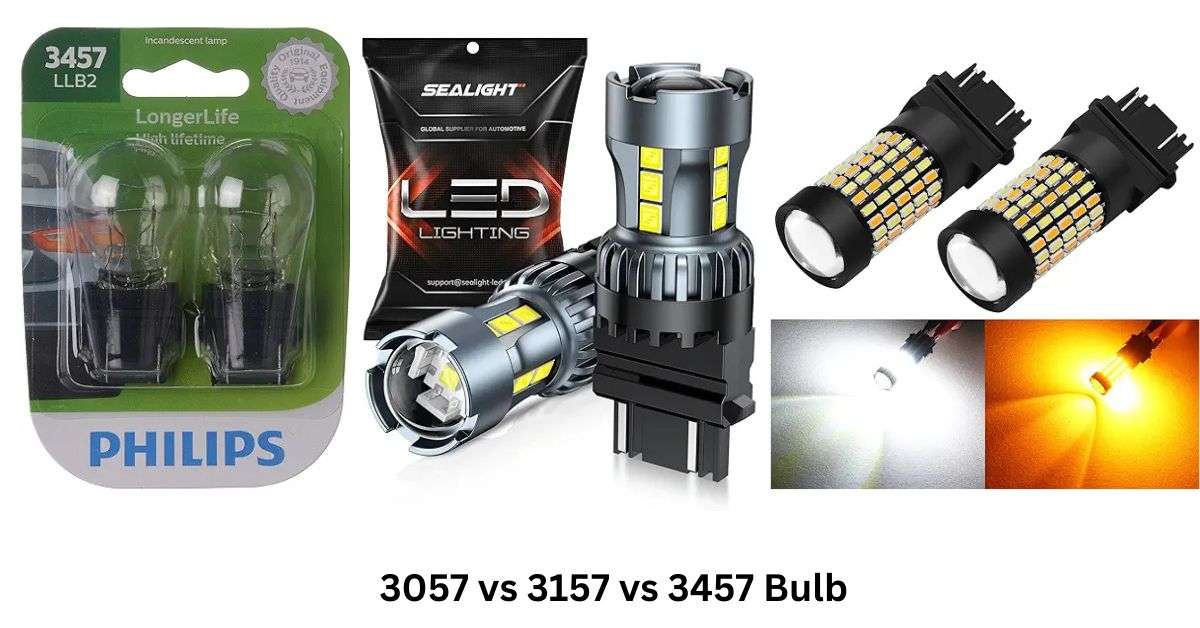Did you know that choosing the wrong replacement bulb can reduce your vehicle’s visibility by up to 50%? When it comes to automotive lighting, the difference between 3057 vs 3157 vs 3457 Bulbs might seem minor, but picking the right one is crucial for both safety and functionality. Trust me—I’ve seen countless drivers confused by these similar-looking options! Let’s break down everything you need to know about these popular bulb types and help you make the perfect choice for your vehicle.

Understanding the Basics: What Sets These Bulbs Apart
Physical Differences in Base Design and Pin Configuration
The 3057, 3157, and 3457 bulbs share a similar design but differ slightly in their base configuration. These differences impact how they fit into sockets, so choosing the right type ensures proper installation and functionality.
Voltage and Wattage Specifications
- 3057 Bulb: Lower wattage and moderate brightness, suitable for standard applications.
- 3157 Bulb: Higher wattage, delivering improved brightness for enhanced visibility.
- 3457 Bulb: The most powerful among the three, with a higher power rating and superior light output.
Standard Applications and Vehicle Compatibility
- 3057 Bulbs: Commonly used in older vehicles for tail and parking lights.
- 3157 Bulbs: Popular in modern vehicles for brake and reverse lights.
- 3457 Bulbs: Best suited for high-performance lighting, especially in extreme weather conditions.
Base Types and Socket Differences Explained
The base type directly affects socket compatibility. Always check your vehicle’s manual for the correct part number to avoid mismatched installations.
Detailed Comparison: 3057 Bulb Characteristics
Common Applications and Vehicle Fitments
Typically found in tail lights, parking lights, and interior automotive lighting.
Power Consumption and Brightness Output
The 3057 bulb provides adequate brightness for standard driving conditions while consuming minimal power.
Dual-Filament Functionality Explained
This bulb features a dual-filament design, enabling it to serve multiple purposes, like brake and tail lighting, in one unit.
Average Lifespan and Durability Factors
With proper use, the 3057 offers a reliable lifespan, making it a budget-friendly choice for everyday drivers.
Cost Considerations and Value Analysis
Its affordability makes it a go-to option for drivers looking for an economical yet reliable solution.
In-Depth Look: 3157 Bulb Features
1. Primary Uses and Vehicle Compatibility
The 3157 bulb is often found in brake, reverse, and turn signal lights in modern vehicles.
2. Brightness Levels and Power Efficiency
It delivers brighter light compared to the 3057, improving visibility and safety.
3. Dual-Function Capabilities
Perfect for vehicles requiring multi-purpose bulbs, such as brake and tail lights.
4. Performance in Different Weather Conditions
The 3157 performs well in various weather conditions, ensuring consistent visibility during fog or rain.
5. LED Upgrade Options Available
For even better performance, consider a 3157 LED upgrade, which offers higher brightness and energy efficiency.
Comprehensive Guide: 3457 Bulb Specifications
1. Specific Use Cases and Vehicle Applications
Ideal for vehicles requiring high-output bulbs, especially in challenging weather conditions or high-performance setups.
2. Power Rating and Luminosity Details
The 3457 has the highest power rating and brightness among the three, providing superior illumination.
3. Temperature Resistance and Durability
Its robust design withstands higher temperatures, making it suitable for extended use.
4. Installation Considerations
While straightforward, the 3457 may require a professional installation for vehicles with complex electrical systems.
5. Cost-Effectiveness Analysis
Though slightly more expensive, its durability and performance justify the investment.
Installation Guide and Best Practices
1. Step-by-Step Replacement Instructions
- Turn off the vehicle and locate the bulb housing.
- Turn the old lightbulb counterclockwise to remove it.
- To secure the replacement bulb, insert it and twist it clockwise..
2. Common Installation Mistakes to Avoid
- Forcing an incompatible bulb into the socket.
- Handling the bulb with bare hands, which can reduce its lifespan.
3. Required Tools and Safety Precautions
Use a clean cloth, gloves, and a screwdriver for a safe installation. Before starting the car, always unplug the battery.
4. Professional Installation vs. DIY Considerations
While DIY is possible, seek professional help if unsure about electrical connections.
5. Troubleshooting Common Issues
If the new bulb doesn’t work, check for loose connections or a blown fuse.
Making the Right Choice for Your Vehicle
1. How to Determine the Correct Bulb Type
Consult your vehicle’s manual or check the old bulb’s part number.
2. Checking Vehicle Compatibility
Ensure the bulb matches your vehicle’s voltage and wattage requirements.
3. OEM vs. Aftermarket Options
OEM bulbs guarantee compatibility, while aftermarket options may offer additional features like LEDs.
4. Performance Considerations
For better visibility and energy efficiency, consider upgrading to an LED bulb.
5. Budget Considerations
Pick a bulb that fits your budget without compromising on quality or safety.
Conclusion: 3057 vs 3157 vs 3457 Bulb
Choosing between 3057, 3157, and 3457 bulbs doesn’t have to be complicated! While these bulbs may look similar, their specific applications and characteristics make them unique. Always consult your vehicle’s manual before making a final decision, and don’t hesitate to ask a professional if you’re unsure. Ready to upgrade your vehicle’s lighting? Use this guide to make an informed choice that’ll keep you safely illuminated for miles to come!
Related articles:
- Difference Between 3157a and 3157na Bulb
- 3157a vs 3157na bulb: Understanding the Key Differences in 2024
Hi, I’m Malik Suhail—an SEO expert, web designer, and passionate blogger with 2 years of experience. I specialize in crafting content that is not only informative but also tailored to meet the needs of my readers.
I write about diverse topics, always striving to simplify complex ideas and provide valuable insights that resonate with my audience. Whether it’s about SEO strategies, web design trends, or blogging tips, I am committed to delivering well-researched, practical, and easy-to-understand information.
My mission is to help readers navigate the digital world with confidence and clarity. I believe in adding value through authentic content that inspires action and delivers results.


